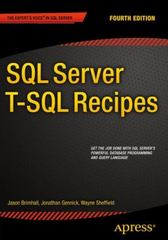Answered step by step
Verified Expert Solution
Question
1 Approved Answer
BACKGROUND As an embedded system engineer of a local consulting company, you are tasked to familiarize with the recently acquired NUCLEO - F 4 1
BACKGROUND
As an embedded system engineer of a local consulting company, you are tasked to familiarize with
the recently acquired NUCLEOFRE and ESPC boards by coming up with some
hardware wiring breadboarding and software developments in assembly languages.
PART UTILIZATION OF CORTEXM BOARD
Use the theoretical and practical knowledgeskills gathered so far to undertake TASK A through
TASK B below, which deal with writing an ARM processor assembly language Keil
environment to satisfy the specified requirements from your company.
Note:
The green LED LD also termed as LED available on the NUCLEOFRE board is active
high.
Select the following STM chip when a new Keil Vision Project is created using Keil IDE
version : STMFRE
Each of your project should contain at least two main files namely the
startupstmfxxs file and yourmainfile.s Using assembly language, you need to
comment out remove by commenting, using a semicolon the boldface letters in the following
assembly code fragment of the startupstmfxxs file:
Code Fragment
; Reset Handler
ResetHandler PROC
EXPORT ResetHandler WEAK
; Line IMPORT SystemInit
IMPORT main
; Line LDR RSystemInit
; Line BLX R
LDR Rmain
BX R
ENDP
Code Fragment
; User Initial Stack & Heap
IF :DEF:MICROLIB
EXPORT initialsp
EXPORT heapbase
EXPORT heaplimit
ELSE
; Line IMPORT usetworegionmemory
EXPORT userinitialstackheap
userinitialstackheap
Note: It is advisable that you save the modified startup file to a slightly different name from the
original one, as the contents of the original startup file should remain unaltered.
Task A: ActivationDeactivation of Output Devices LEDs by NUCLEOFRE Board
i Using GPIOAODR not GPIOABSRR here blink the NUCLEOFRE boards green
LED labelled as LD to be called as LED Note: LD is connected to the PA pin.
points
ii Using GPIOABSRR not GPIOAODR blink the NUCLEOFRE boards green LED
ie LDLED which is stated in part Ai
points
iii Using GPIOBBSRR continuously illuminate an external preferably red LED using Port C
to be called as LED Note: LED is to be active high.
points
iv Using GPIOBODR, continuously illuminate the active high red LED LED stated in part
Aiii
points
v Using GPIOODR, blink LED stated in part c using a suitable time delay.
points
Task B: Display of Static Message on Output Device LCD using Assembly Language
Develop an assembly language program for the NUCLEOFRE processor to display the
following messages on the LCD display:
Row :
Row :
points
Note: As a guide, refer to the Motorola assembly program acongrats.asm provided
by the instructor.
PART UTILIZATION OF ESPCBASED BOARD
In the tasks below, you are to write a RISC V processor assembly language Code::Blocks
environment to satisfy the specified requirements from your company. In this part, you are free to
choose any port and pin of the ESPC chip as input.
Task A: ActivationDeactivation of Output Devices LEDs by ESPC Board
i Using a port and pin of your choice, continuously illuminate an external preferably yellow
LED to be called as LED Note: LED is to be active low.
points
ii Blink LED stated in part Ai using a suitable time delay.
points
iii Using a port and pin of your choice, continuously illuminate an external preferably green
LED to be called as LED Note: LED is to be active high.
points
iv Blink LED stated in part Aiii using a suitable time delay.
points
Task B: Using Input Devices Switches to Control Output Devices LEDs by ESPC
Board
Connect two external switches to be labelled as SW and SW to any port and pin as
output of your choice. These switches will be used to control the illumination of LED and
LED introduced in part A For this purpose, write a RISC V assembly language program
Code::Blocks environment to achieve the following requirements:
i When switch SW is pushed, only the yellow LED LED should be turned ON and when
the switch is released, only the green LED LED should be ILLUMINATED.
points
ii When the switches SW and SW are not pushed, both LEDs LED and LED should
be turned OFF. When SW is pressed while SW is not pressed, only the yellow LED
LED should ILLUMINATE. Lastly, when both SW and SW are pressed, only the green
LED LED should be ILLUMINATED.
Step by Step Solution
There are 3 Steps involved in it
Step: 1

Get Instant Access to Expert-Tailored Solutions
See step-by-step solutions with expert insights and AI powered tools for academic success
Step: 2

Step: 3

Ace Your Homework with AI
Get the answers you need in no time with our AI-driven, step-by-step assistance
Get Started


